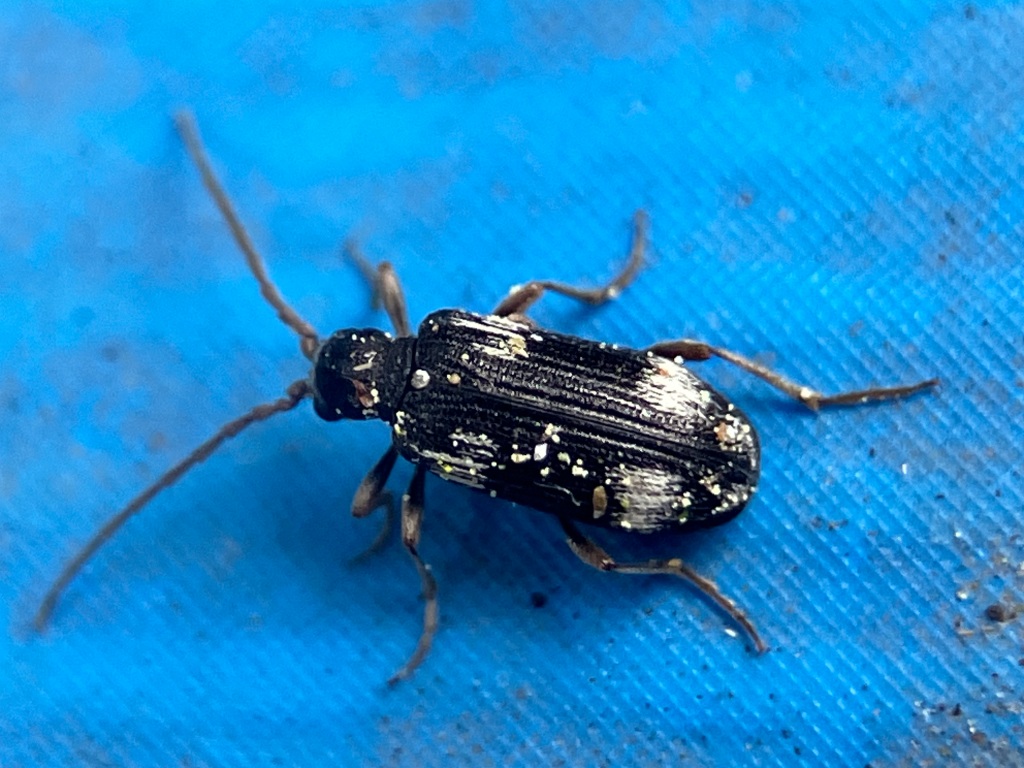Six Spotted Spider Beetle


I found this interesting beetle on the side of our pool the other afternoon and realized I’d actually seen one like it about a week earlier, so I did some digging to figure out what it was. This is a Spider Beetle (subfamily Ptininae), and the species is Ptinus sexpunctatus or Six Spotted Spider Beetle.
These beetles are quite small at about 2.8-4.2 mm. I used my clip-on Apexel macro lens to get these photos. What I found about this beetle’s life history is that the species is not native to North America. The very first record I found was in Pennsylvania in 1915 where the beetle entered via an imported English Walnut, but subsequent discoveries of populations are as recent as 2003 in Nova Scotia, and 2004 in Utah (Majka et al. 2007). I have not found any data as to how recently they may have arrived in the PNW, and found only 1 other record in WA state, aside from my own, when I searched on iNaturalist

Within its native range, Ptinus sexpunctatus, is a known associate of cavity- nesting solitary bees. These include bees in the genera Osmia and Megachile. It has also been collected in the galleries of longhorned beetles (Cerambycidae) in oak (Quercus) forests (Majka et al. 2007). Because of these associations, it is possible that Ptinus sexpunctatus was accidentally imported when two Osmia bee species, Osmia cornuta (Latreille) from Spain and O. cornifrons (Radosz- kowski) from Japan, were introduced into the United States for research and evaluation as pollinators of tree fruits (Cane 2003; Majka et al. 2007). Majka et al. (2007) believe that after arriving in the U.S., Ptinus sexpunctatus colonized the nests of our native Osmia bee, (Osmia lignaria).
The relationship and impact of the nest association between Ptinus sexpunctatus and Osmia lignaria needs further study. Some observations of these associations in Europe describe the beetle as being destructive to Osmia nests, preying on bee larvae and pupae (Majka et al 2007).
References and Further Reading
Bugguide.net. 2007. Pinus sexpunctatus. https://bugguide.net/node/view/107176
Cane, J. H. 2003. Exotic nonsocial bees (Hymenoptera: Apiformes) in North America: Ecological implications. pp. 113–126. In, K. Strickler and J. H. Cane (Editors). For Nonnative crops, Whence Pollinators of the Future? Thomas Say Publications in Entomology: Proceedings. Entomological Society of America. Lanham, Maryland, U.S.A. 204 pp.
Majka C.G., Philips T.K., Sheffield C. (2007) Ptinus sexpunctatus Panzer (Coleoptera: Anobiidae, Ptininae) newly recorded in North America. Entomological News 118: 73-76 (Full text)
